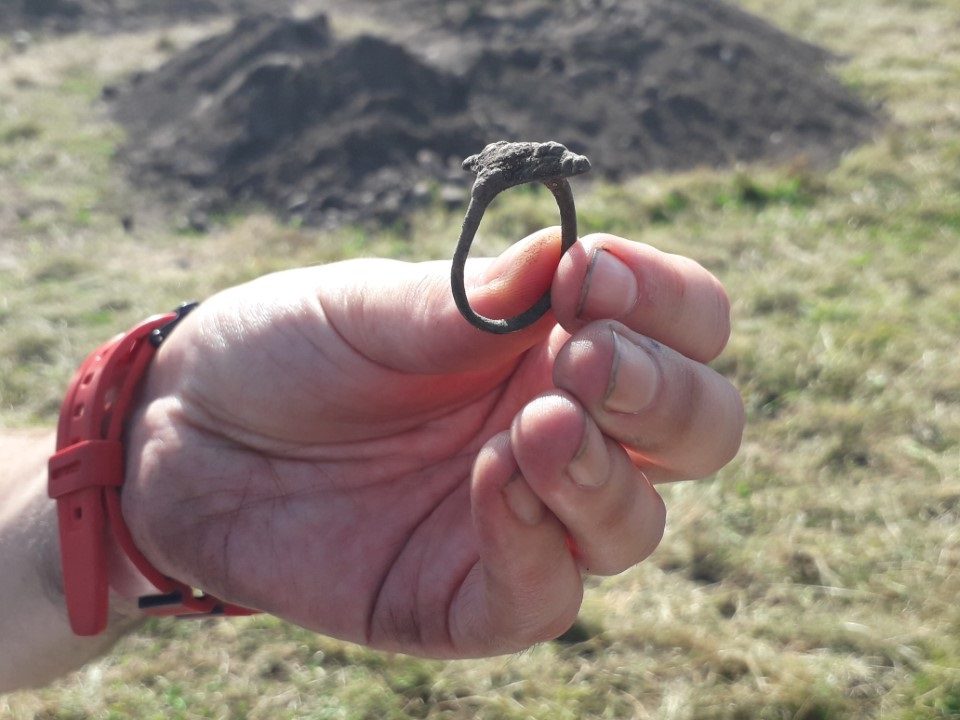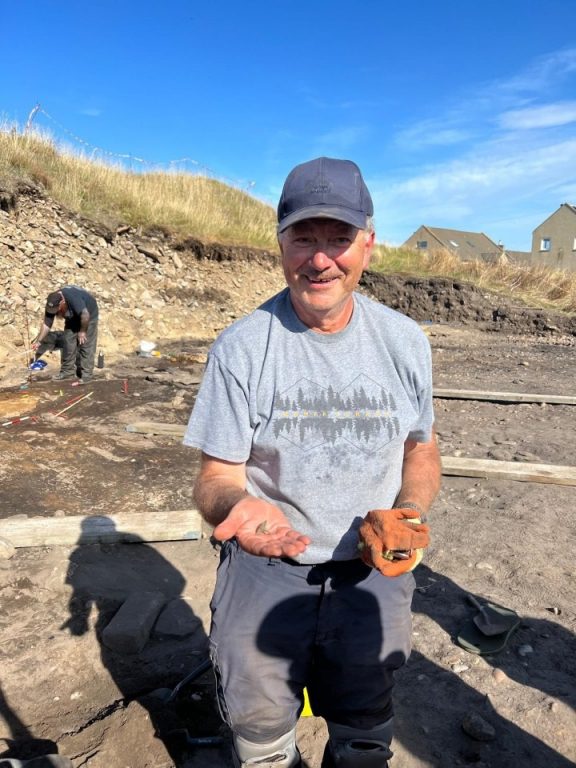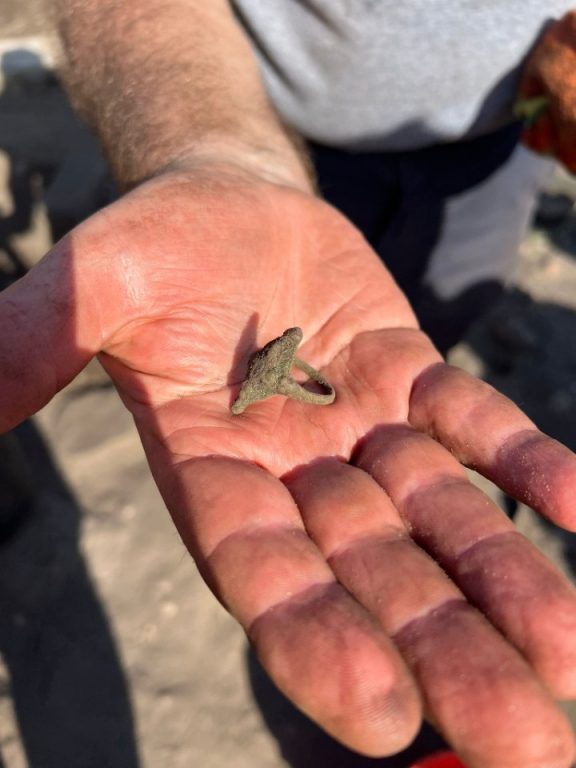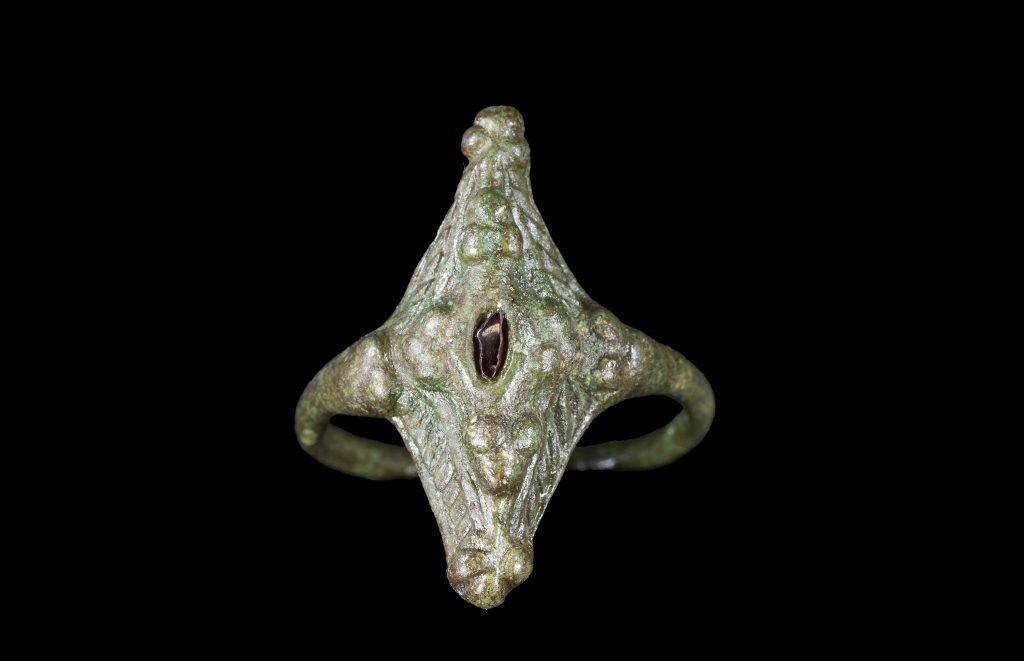A ‘remarkable’ Pictish ring has been uncovered at a Moray fort previously thought to have been ‘archaeologically vandalised’ by the construction of a new town.
The kite-shaped ring with a garnet or red glass centre had lain undiscovered for more than 1,000 years at the Burghead fort before it was uncovered.
Although known as a Pictish site, its historical value was widely assumed to have been lost when the town of Burghead was constructed in the 1800s, covering over much of the fort and dismantling the stone that remained for building.
The ring was found by John Ralph on the excavation led by Aberdeen University where he studied 50 years ago.

Credit: University of Aberdeen.
The amateur archaeologist had many moments over the two-week excavation – his third dig at the site – where he thought he had discovered something, only to for the experts to tell him he had a knack for finding ‘shiny pebbles’.
So when, on the last day of the final dig, he found something that looked interesting, he didn’t hold out much hope.
It was only when he showed it to a fellow volunteer and his eyes lit up that he realised he might ‘have something’.
John, who grew up in Burghead, is delighted to have added his own piece to the puzzle in understanding the region’s Pictish past.
‘It is a real thrill to dig up an artefact in the knowledge that you are probably the first person to see it for 1000-1500 years,’ he said.
‘It becomes a real guessing game of who owned it, what did they use it for and how was it lost.
‘My ancestors were part of the movement of people encouraged into the new town to support the fishing industry – the reason that much of what remained of the fort was destroyed.
‘It is good to think that I’ve given something back with this little piece of the puzzle of the past.

John Ralph with the ring. Credit: University of Aberdeen.
‘I like to think of archaeology as a dot-to-dot picture and I am delighted to have been able to make my own little mark.’
The ring is currently with the National Museum of Scotland’s Post-excavation Service for analysis.
Professor Noble has led excavation work over the last three years which has shed new light on the importance of the site and enabled the development of 3-D reconstructions of how it might once have looked.
‘There are very few Pictish rings which have ever been discovered and those we do know about usually come from hoards which were placed in the ground deliberately for safekeeping in some way,’ he said.
‘We certainly weren’t expecting to find something like this lying around the floor of what was once a house but that had appeared of low significance so, in typical fashion, we had left work on it until the final day of the dig.

Credit: University of Aberdeen.
‘We will now look at the ring, evidence of buildings and other artefacts to consider whether the ring was crafted on the site and who such an important piece of jewellery might have been made for.
‘We have some other evidence of metalworking and the number of buildings we have uncovered is quite striking.
‘This further indicator of the high-status production of metalwork adds to the growing evidence that Burghead was a really significant seat of power in the Pictish period.’
Read more Culture stories here.
Subscribe to read the latest issue of Scottish Field.
TAGS


